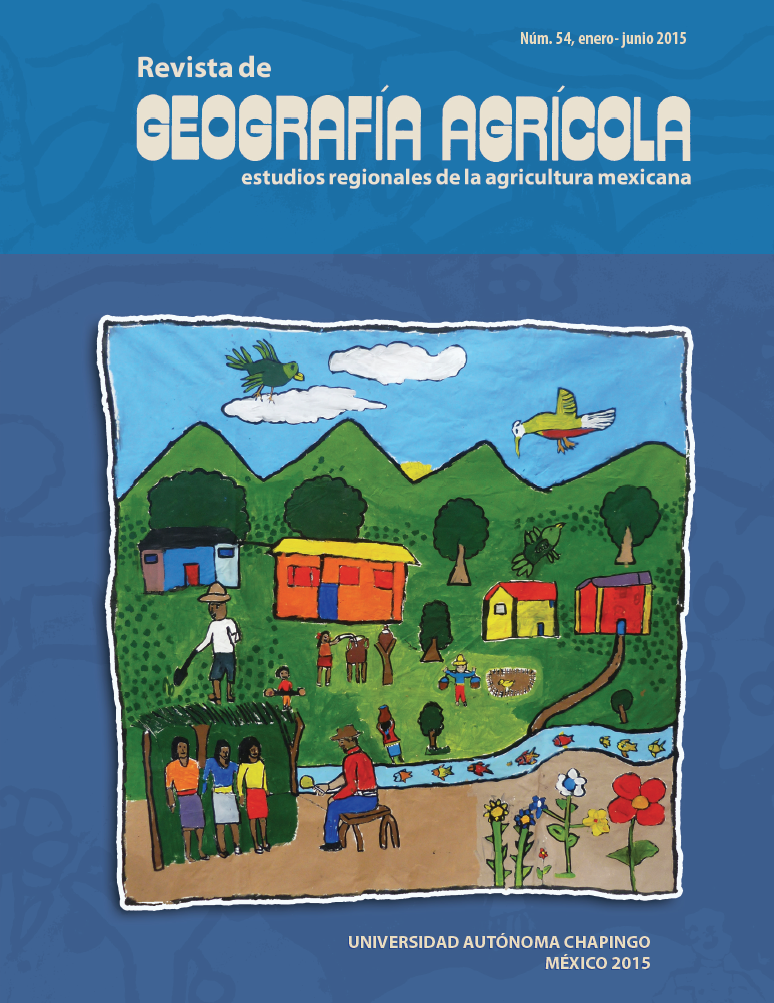Abstract
The study was conducted inside the Mixteca region, particularly in the communities of Santa Ana Tamazola, and Santa Maria La Concepcion, both in the municipality of Jolalpan, Pueba. The information obtained was derived from the field instruments referred as semi-structured interviews asides from participant observations and dialogues with key informants. The findings focus on farm families whose economy is based on field-related activities and the extraction of important natural resources from the tropical forest caducifolious, particularly firewood. Some farm families sell the firewood to diversify their activities and restore the family income. It involves dinamic farm families who readjust their life strategies according to the current situation. With the implementation of the Lorena Stove, an estimated $1 122.58 per farm family is saved every year. These savings allow the aquisition of other products that satisfy farm family needs allowing a greater social wellfare and better health for social reproduction.
References
Arana O., R. I. 2003. Métodos de muestreo. Tesis de licenciatura. Departamento de Estadística, Matemática y Cómputo. División de Ciencias Forestales. Universidad Autónoma Chapingo. 179 p.
Babbie E. 2000. Fundamentos de la investiga- ción social. International Thomson Editores. Capítulos: 5. Conceptuación y medición; y 6. Operacionalización. http://books.google.com.mx/books?hl=es&lr=lang_es&id=1_yyPqkoqMIC&oi=fnd&pg=PA3&dq=%22m%C3%A9todos+de+investigaci%C3%B3n+social%22&ots=7flIZie1hr&sig=wiI_GnvDIHIfHZduRWe-bQpIbv9M
Berrueta V., 2007. Evaluación energética del desempeño de dispositivos para la cocción con leña. Tesis para obtener el grado de doctor en Ingeniería (Energía). Facultad de Ingeniería. Universidad Nacional Autónoma de México.
Cepal. 2011a. Encuesta nacional de leña: consumo de leña en hogares y pequeña industria en Guatemala. Comisión Económica para América Latina y el Caribe.
Cepal. 2011b. Encuesta nacional de leña: con- sumo de leña en hogares y pequeña industria en Honduras. Comisión Económica para América Latina y el Caribe
Comboni S; J. M. Juárez y P. Mejía. 2010. El arte de investigar y sus implicaciones. 1ª edición. Departamento de Política y Cultura. UAM-X, CSH. México, DF. 278 p.
Cuervo M.; L. Gutiérrez y E. Ortiz. 2003. Regiones naturales y de planeación para el estado de Puebla. Análisis económico. Primer semestre. Año/ vol. XVIII, número 037. Universidad Autónoma Metropolitana-Azcapotzalco. México, D. F. 296 p.
Díaz, R. 2000. Consumo de leña en el sector residencial de México. Evolución histórica y emisiones de CO2. Tesis de maestría. Facultad de Ingeniería, Universidad Nacional Autónoma de México. México, DF. 113 p.
FAO-Sagarpa. 2007. Proyecto tipo: Estufas ahorradoras de leña. Programa Especial para la Seguridad Alimentaria. México. 17 p.
Guízar N., E. y A. Sánchez V. 1991. Principales ár- boles del Alto Balsas. 1ª edición. División de Ciencias Forestales. Universidad Autónoma Chapingo. México. 207 p.
Guízar N., E. y M. Macías E. 2000. La vegetación del municiio de Jolalpan, Mixteca Poblana. Boletín técnico núm. 31. División de Ciencias Forestales. Universidad Autónoma Chapingo. Chapingo, Estado de México. 59 p.
INEGI. 2010. Instituto Nacional de Estadística, Geografía e Informática. Instituto Nacional para el Federalismo y el Desarrollo Municipal. Sistema Nacional de Información Municipal. http://www.snim.rami.gob.mx/
Masera O., R. y J. Nava. 1997. Fuel switching or multiple cooking fuels? Understanding interfuel substitution patterns in rural Mexican households. Biomass energy. 361 p.
Mayan J., M. 2001. Una introducción a los métodos cualitativos: Módulo de Entrenamiento para los Estudiantes y Profesionales. International Institute of Qualitative Methodology. 150 p. los Estudiantes y Profesionales. International Institute of Qualitative Methodology. 150 p. " />
OMS. 2007. Energía doméstica y salud: combustibles para una vida mejor. 132 p.
Quiroz C., y G. Calderón. 2012. El fogón abierto de tres piedras en la Península de Yucatán; traducción y transferencia tecnológica. México. 301 p.
Sáez A., H. E. 2008. Cómo investigar y escribir en ciencias sociales. UAM-X. México, DF. 383 p.
Scheaffer R. L. 1987. Elementos de muestreo. Versión en español. Grupo Editorial Iberoamérica, S. A. de C. V. México, DF. 321 p.
Smith K., R. Rogers, J., y Cowlin, S., C. 2005. Hou- sehold fuels and ill-health in developing countries: what improvements can be brought by LP gas (LPG) París, Francia, World LP Gas Association & Intermediate Technology Development Group. 250 p.

This work is licensed under a Creative Commons Attribution-NonCommercial 4.0 International License.
Copyright (c) 2015 Revista de Geografía Agrícola



